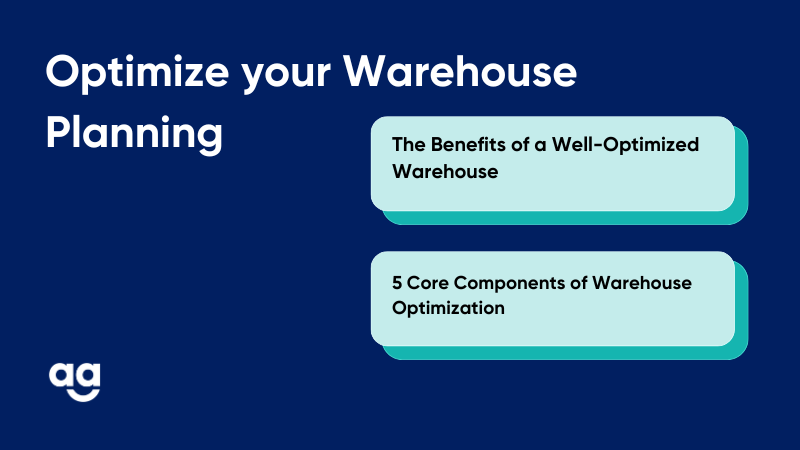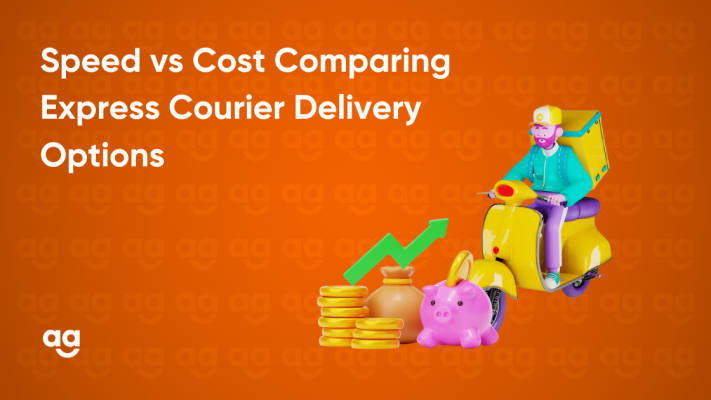Planning Pays Off: 5 Strategies to Get the Most Out of Your Delivery Speed Choice
August 21, 2024
5 min read
Introduction
Are you struggling with warehouse space constraints and operational inefficiencies? You are not alone. Inefficiencies can easily arise with a growing number of Stock Keeping Units (SKU), manual procedures, and obsolete systems.
Moreover, simultaneously optimizing warehouse cost, operations, productivity, and customer satisfaction is a challenge in itself. The warehouse area is valuable real estate.
That is why it is crucial to squeeze every ounce of value out of your facility. Increasing warehouse expenses and the complexities of modern supply chains necessitate innovative solutions.
This guide will equip you with practical warehouse planning strategies to maximize space utilization, enhance operational efficiency, and drive bottom-line results.

The Benefits of a Well-Optimized Warehouse
A well-tuned warehouse is the lifeblood of efficient operations, far surpassing its role as a mere storage facility. When optimized, an e-commerce warehouse can deliver financial gains and customer satisfaction.
Operational Excellence
A well-optimized warehouse operates with the precision of a finely tuned machine. From receiving raw materials to shipping finished products, every process is streamlined to eliminate waste and maximize efficiency.
This seamless operation results in lower costs, higher productivity, and the ability to handle increased order volumes without compromising quality.
Customer Delight
Customers expect speed and accuracy. A well-organized warehouse delivers on both fronts—quick order processing results in swift deliveries that surpass customer expectations. Moreover, precise picking and packing minimize errors, ensuring customers receive the correct items. This attention to detail nurtures trust and loyalty.
Financial Gains
Beyond operational efficiency and customer satisfaction, an optimized warehouse is a profit center. A consolidated warehouse can centralize inventory and reduce transportation costs.
Businesses can significantly cut expenses by reducing labor costs, minimizing errors, and optimizing space. Additionally, faster inventory turnover and reduced stockouts improve cash flow.
Strategic Advantage
A well-run warehouse enables companies to scale operations smoothly to satisfy rising demand. Companies can differentiate themselves from rivals by implementing effective order fulfillment and delivery processes.
A properly managed warehouse also generates data that offers insightful information for decision-making in the company. When faced with unforeseen obstacles, new product lines, or variations in demand, it may react rapidly.
Sustainability and Environmental Impact
A well-optimized warehouse offers numerous advantages that extend beyond core operational improvements. A focus on optimization often aligns with broader sustainability goals.
Simplified transit routes, decreased energy use, and less waste can lower a brand’s environmental footprint. Additionally, adopting sustainable practices might draw in environmentally sensitive clients and improve a brand’s reputation.
5 Core Components of Warehouse Optimization
With thorough planning and proper technology, even a small warehouse can achieve high levels of efficiency. Improving warehouse operations involves a strategic plan that covers various important areas:
Space Management
Effective space management is crucial for warehouse efficiency. Strategically placing fast-moving items, designating specific zones for different product types, and carefully balancing aisle width with storage capacity is essential for optimizing workflow and minimizing wasted space.
Layout and Design
Efficient warehouse operations demand careful planning. Implementing a clear one-way traffic system and incorporating warehouse cross-docking can significantly reduce congestion, improve safety, and expedite order fulfillment. Additionally, a flexible layout that can adapt to changing business needs ensures long-term operational efficiency.
Technology Integration
Implementing Warehouse Management Systems with RFID and barcode technology enables real-time inventory tracking. Consider automated solutions like AS/RS for handling large volumes efficiently.
Additionally, harnessing data analytics empowers informed decision-making, identifying bottlenecks, and optimizing workflows.
Workforce Optimization
Continuous investment in employee training, fostering versatility through cross-training, and implementing performance metrics are essential for building a skilled and adaptable team. This combination drives efficiency, improves problem-solving abilities, and ultimately contributes to overall warehouse success.
Focusing on these core warehouse planning elements enables businesses to significantly enhance operations, reduce costs, improve order fulfillment times, and enhance customer satisfaction.
Conclusion
Warehouse planning is a dynamic process that requires continuous attention. In warehouse management, being proactive implies knowing when and how much space is needed, anticipating future storage needs, and implementing adaptable storage options like modular shelves.
Businesses with varying storage needs can benefit from the flexibility of renting warehouse space. Partnering with reliable warehouse companies to contract out logistics and fulfillment tasks is recommended if the complexities of warehouse operations become too much to handle.
Shipyaari’s flexible warehouse solutions allow you to grow your business effortlessly without requiring substantial initial financial commitments.
We can assist you in cutting delivery times by as much as 70%, which would result in an astounding 45% drop in return-to-origin rates. Contact us today to explore our tailored solutions.
Frequently Asked Questions
Optimizing warehouse space improves efficiency, cuts costs, enhances customer satisfaction, and boosts financial gains by streamlining workflows and reducing errors.
Technology like Warehouse Management Systems (WMS), RFID, and automation enhances inventory tracking, speeds up operations, and aids in decision-making through data analytics.
Best practices include placing fast-moving items strategically, designating specific zones, balancing aisle width with storage, and using vertical and modular shelving.
Workforce optimization improves efficiency by investing in training, cross-training employees, and using performance metrics to boost productivity and adaptability.
Suggested Reads
Hyperlocal Personalization: Tailoring Experiences for Local Customers
Introduction The eCommerce industry in India has witnessed a rapid growth of hyperlocal services in
Continue ReadingDec


















 Shipping
Shipping







